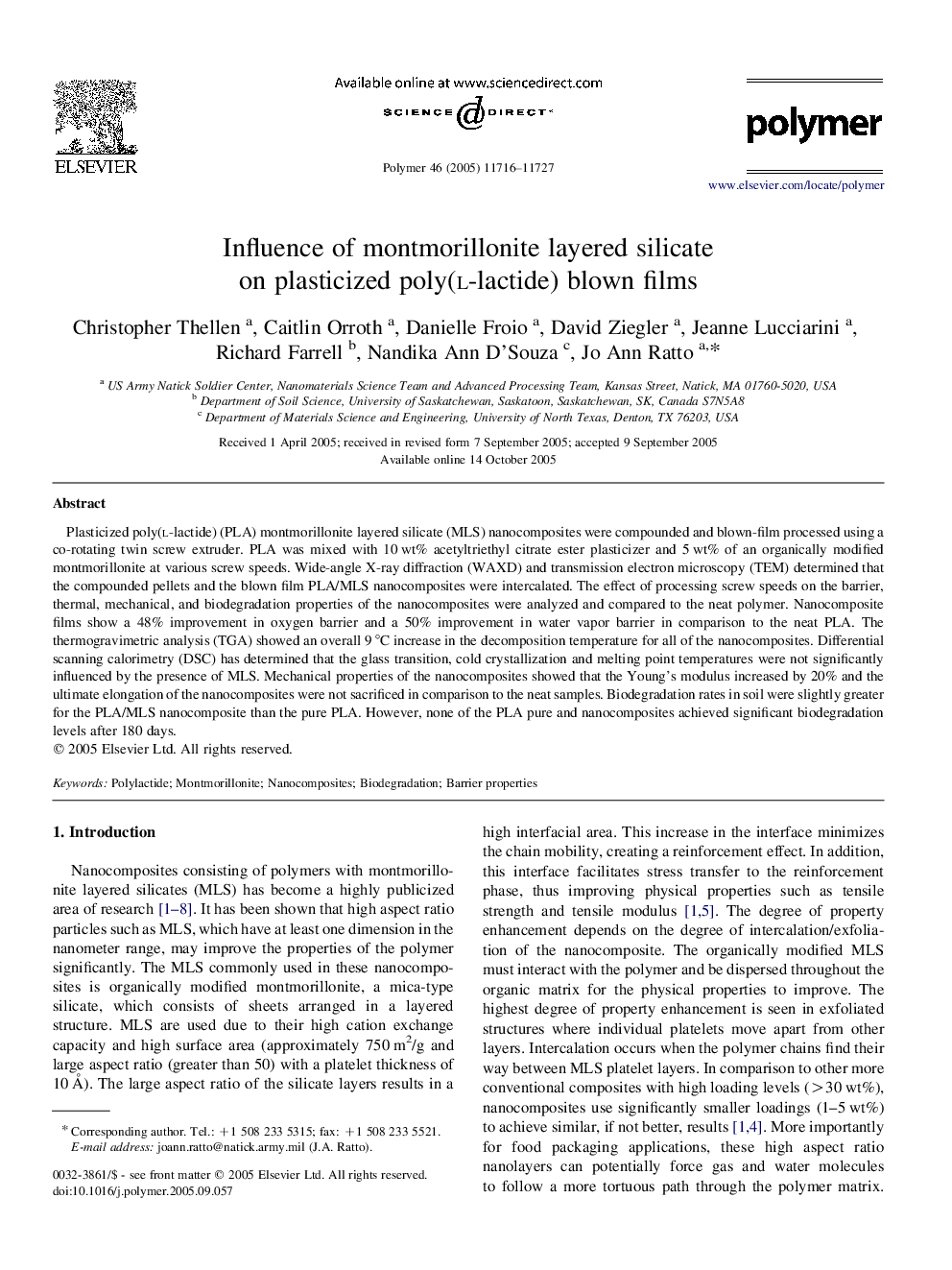| Article ID | Journal | Published Year | Pages | File Type |
|---|---|---|---|---|
| 5187535 | Polymer | 2005 | 12 Pages |
Plasticized poly(l-lactide) (PLA) montmorillonite layered silicate (MLS) nanocomposites were compounded and blown-film processed using a co-rotating twin screw extruder. PLA was mixed with 10 wt% acetyltriethyl citrate ester plasticizer and 5 wt% of an organically modified montmorillonite at various screw speeds. Wide-angle X-ray diffraction (WAXD) and transmission electron microscopy (TEM) determined that the compounded pellets and the blown film PLA/MLS nanocomposites were intercalated. The effect of processing screw speeds on the barrier, thermal, mechanical, and biodegradation properties of the nanocomposites were analyzed and compared to the neat polymer. Nanocomposite films show a 48% improvement in oxygen barrier and a 50% improvement in water vapor barrier in comparison to the neat PLA. The thermogravimetric analysis (TGA) showed an overall 9 °C increase in the decomposition temperature for all of the nanocomposites. Differential scanning calorimetry (DSC) has determined that the glass transition, cold crystallization and melting point temperatures were not significantly influenced by the presence of MLS. Mechanical properties of the nanocomposites showed that the Young's modulus increased by 20% and the ultimate elongation of the nanocomposites were not sacrificed in comparison to the neat samples. Biodegradation rates in soil were slightly greater for the PLA/MLS nanocomposite than the pure PLA. However, none of the PLA pure and nanocomposites achieved significant biodegradation levels after 180 days.
